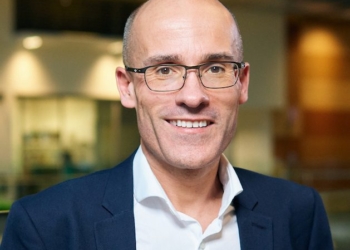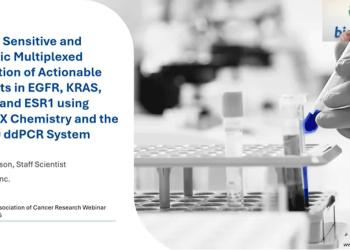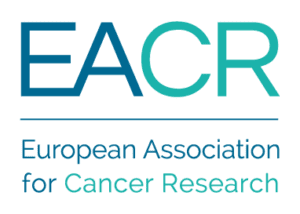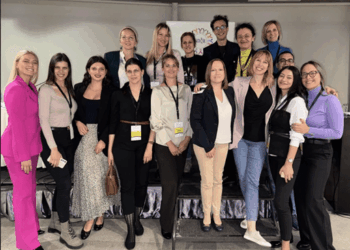Liquid biopsies are demonstrating the potential to support early detection and screening of cancer, as a prognostic tool, to predict treatment efficacy or resistance, to evaluate treatment toxicity and to monitor minimal residual disease and anticipate disease relapse. The diversity and combination of cancer analytes in blood have the potential to boost liquid biopsy utility further.
The EACR conference on Liquid Biopsies was held between 12-14 November 2024 in Lyon, France and brought together 215 attendees from 35 countries. The conference, with its slate of recognised experts in many aspects of liquid biopsy research, six outstanding proffered papers selected from the submitted abstracts and 127 poster presentations, set to provide a comprehensive overview of liquid biopsies in cancer. Topics discussed covered what is already in clinical practice, what is on the horizon in cancer patient management and the latest techniques and applications for detecting solid tumours using liquid biopsies, including the use of circulating nucleic acids (cell free (cf) DNA, circulating tumour (ct) DNA, cfRNA, snoRNA), circulating proteins, circulating tumour cells (CTC) and extracellular vesicles.
The conference started with a lecture in memoriam of Professor Michael Speicher aiming to honour his research that contributed to the development of sophisticated technologies for the high-resolution analysis of the genome and the transcriptome of single or limited amounts of cells, with a focus on CTCs and cfDNA. The programme continued to explore integrative liquid biopsies with lectures from renowned scientists from across the world such as Dr Francesca Demichelis from University of Trento (Italy), that looked at multi-modal liquid biopsy approaches for cancer profiling; Dr James Hadfield, from Oncology Translational Medicine at AstraZeneca (UK) that discussed the uses of ctDNA for monitoring minimal residual disease (MDR) and Dr Manuel Valiente from CNIO (Spain) that looked at biomarkers of therapeutic response in brain metastasis.
The second day of the conference debuted with a conversation around CTCs covering their role and applications in various cancers, including prostate (Dr Johann De Bono ICR, UK), colorectal and breast cancer (Dr Shang Cai, Westlake University, China; Dr Nicola Aceto, ETH Zurich, Switzerland; Dr Huiping Liu, Northwestern University, USA). Dr Shang Cai looked at the role that cytosolic bacteria play in breast cancer metastatic recurrence. Research from his lab shows that CTCs carry intratumor bacteria with them. This symbiosis enhances tumour cell survival as the microbiota reorganised the actin cytoskeleton in CTCs to offer protection from the fluid shear stress, hence promoting lung metastasis in breast cancer [1]. Dr Cai continued his presentation by showing his latest data from human samples and sharing some insight into the molecular mechanism involved in this process.
The second part of the second day was dedicated to new discoveries in liquid biopsy and new technologies. As part of this session, Dr An Hendrix from Ghent Universiteit, (Belgium) discussed the role of extracellular vesicle-based biomarkers, from technology towards biomedical application and Dr Joshua Edel from Imperial College London (UK) presented a novel diagnostic approach for highly multiplexed biomarker detection. Dr Cristina Saura Manich from Vall d’Hebron (Spain) presented the advances that her group made in using breast milk liquid biopsy for the early detection of breast cancer in postpartum women [2]. It is important to note here that postpartum breast cancer is considered up to 10 years after pregnancy, which means it includes up to 55% of breast cancers. Dr Saura reported for the first time the presence of ctDNA in breast milk. Moreover, her results show that, when taking into account delays in screening caused by radiation concerns in pregnancy and breastfeeding, liquid biopsies from breast milk samples can lead to earlier detection of breast cancer up to a year and a half before diagnosis performed using traditional methods (mammogram).
The discovery in liquid biopsy and new technologies session also included the EMBO keynote lecture given by Dr Mathias Uhlen from KTH Royal Institute of Technology (Sweden). Dr Uhlen discussed the idea of a human pan-disease blood atlas based on next generation blood profiling and the implications this holds for early diagnosis, risk stratification and disease monitoring. Dr Uhlen’s group is exploring proteome signatures in the blood of patients from across 12 cancer types (including colorectal, breast, lung, and prostate cancer), working towards the development of an open-access Disease Blood Atlas and cancer-specific signatures [3].
The conversation during the last day of the conference shifted focus towards the implementation of liquid biopsy and clinical trials. Here, Dr Eleni Tomazou from St Anna CCRI (Austria) discussed the integration of cfDNA methylation and fragmentation patterns through deep learning; Dr Joshua Lang from Carbone Cancer Centre, University of Wisconsin (USA) looked at multiplexed liquid biopsies in metastatic prostate cancer from prognostic to predictive value and Dr Florent Mouliere from CRUK (UK) talked about cancer detection and monitoring using multi-modal liquid biopsy. Dr Valsamo Anagnostou from Johns Hopkins University (USA) gave the closing keynote lecture on liquid biopsy approaches for cancer characterization and monitoring. Dr Anagnostou began his lecture with an overview of the clinical value of ctDNA based liquid biopsies for minimal residual disease tracking and optimisation of therapeutic response and clinical outcome [4]. Further on, Dr Anagnostou presented supporting data for the use of ctDNA in predicting and monitoring therapeutic efficacy by capturing the tumour response and immune-related adverse events [5, 6]. As an example in this sense, Dr Anagnostou emphasised the utility of ctDNA in capturing tumor burden and residual disease following PD-1 and relatlimab treatment following neoadjuvant chemoradiotherapy in a clinical trial for patients with resectableesophageal/ gastroesophageal junction cancers [7]. Dr Anagnostou concluded the scientific talks at the 2024 edition of the EACR Liquid Biopsies conference with a summary of ctDNA uses and an inspirational note on the power of ctDNA adaptive trials to bridge scientific discovery with clinical cancer care.
EACR Conferences
At the EACR we are dedicated to providing excellent cancer research conferences where the latest research topics and interaction for participants are the very highest priorities. Make sure you add the dates of the upcoming EACR Conferences to your diary now. Don’t forget we offer member discounts on all of our registration fees!
References
- Fu, A., et al., Tumor-resident intracellular microbiota promotes metastatic colonization in breast cancer. Cell, 2022. 185(8): p. 1356-1372.e26.
- Saura, C., et al., Early-Stage Breast Cancer Detection in Breast Milk. Cancer Discovery, 2023. 13(10): p. 2180-2191.
- Álvez, M.B., et al., Next generation pan-cancer blood proteome profiling using proximity extension assay. Nature Communications, 2023. 14(1): p. 4308.
- Anagnostou, V. and V.E. Velculescu, Pushing the Boundaries of Liquid Biopsies for Early Precision Intervention. Cancer Discov, 2024. 14(4): p. 615-619.
- Murray, J.C., et al., Elucidating the Heterogeneity of Immunotherapy Response and Immune-Related Toxicities by Longitudinal ctDNA and Immune Cell Compartment Tracking in Lung Cancer. Clin Cancer Res, 2024. 30(2): p. 389-403.
- Sivapalan, L., et al., Liquid biopsy approaches to capture tumor evolution and clinical outcomes during cancer immunotherapy. J Immunother Cancer, 2023. 11(1).
- Kelly, R.J., et al., Neoadjuvant nivolumab or nivolumab plus LAG-3 inhibitor relatlimab in resectable esophageal/gastroesophageal junction cancer: a phase Ib trial and ctDNA analyses. Nature Medicine, 2024. 30(4): p. 1023-1034.









